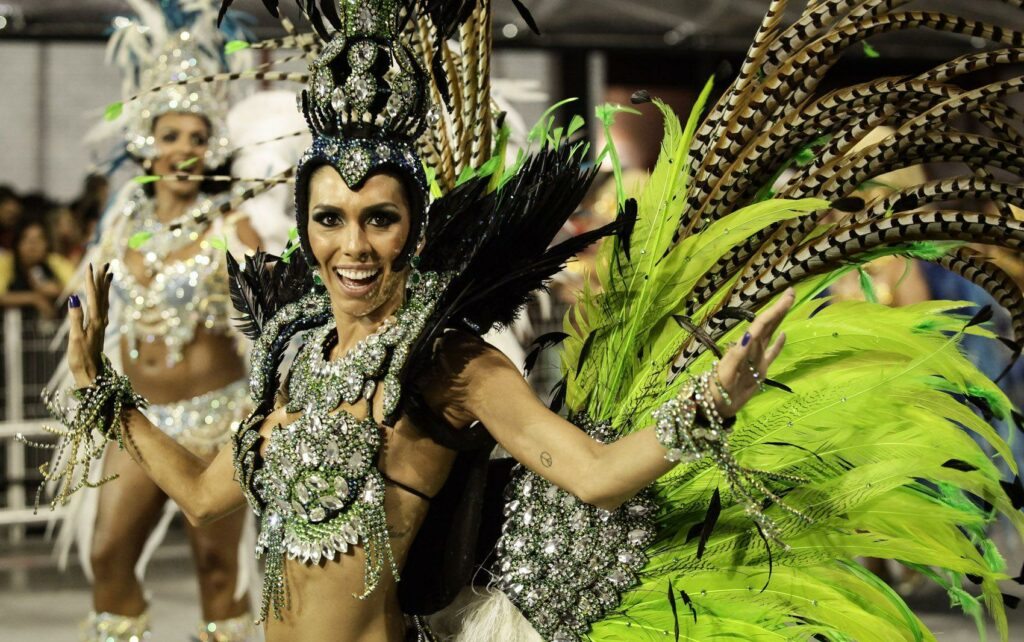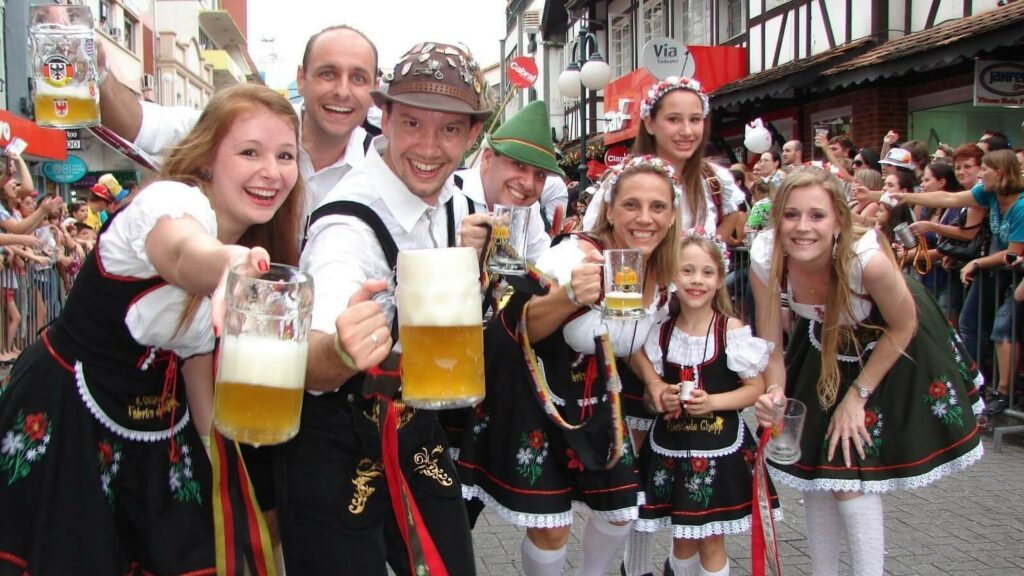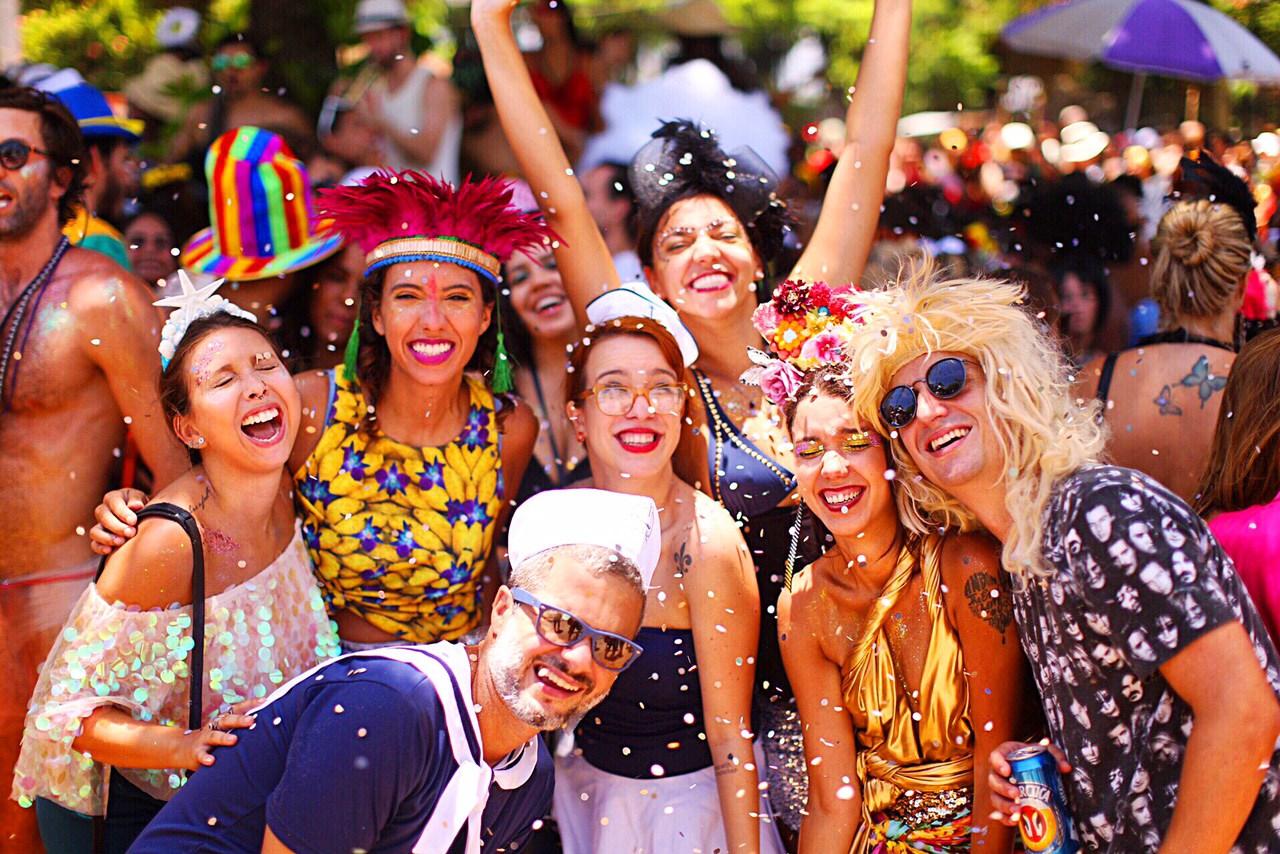Anyone who thinks that Carnival is the only example we can give of popular festivities in Brazil is wrong. Know that the country is very rich in cultural diversity and this leads to countless festivities with peculiar configurations throughout the territory.
Popular Festivities in Brazil – Festa Junina
The June festivities take place throughout the month of June, the month of famous saints such as Santo Antônio, São João and São Pedro.
It’s a party full of traditions, from cooking to typical square dances and games – such as fishing, elegant mail and clown mouths.
In cooking, corn-based dishes such as corn tortillas, popcorn and pamonha are indispensable.
That’s because before being religious, the party was pagan and worshiped the gods of nature and fertility. It was during this time that people celebrated a successful harvest, and corn was one of the most produced agricultural products at the time.
Despite happening in all regions of Brazil, Campina Grande, in Paraíba, is the stage for the biggest June festival in Brazil.
Bumba meu boi
This attraction is typical of the north and northeast regions, the Bumba meu boi festival includes many dances, processions and theatrical stagings of how the resurrection of one of the favorite oxen of the owner of Mãe Catirina and Pai Francisco started this traditional Brazilian festival. The festivals are held between June and July.
In Maranhão, whose celebration dates back to the 18th century, several groups of bumba meu boi are performed in different arraiás. The bumba meu boi from Maranhão holds the titles of Brazilian Cultural Heritage and Intangible Heritage of Humanity.
In the northern region, where the Parintins Folk Festival takes place, the party has been held since 1965. Thousands of spectators followed the debate between the civil associations of the Bumbódromo.
The associations – Boi Garantido and Boi Caprichoso – are presented and evaluated by a guest jury on several criteria, including: organization of frogs, flag bearers, boi-bumbá (evolution), choreographic and folkloric groups.
Popular Festivities in Brazil – Carnival
Carnival is one of the most famous popular Brazilian festivals in the world. Of pagan origin, Carnival attracts people from the beginning, who can have fun wearing masks to hide their identities and change social roles – a tradition that emerged in Venice.

It is celebrated throughout the country between February and March, and each region has its specialties.
The Southeast region is known for its samba school parades, and the association’s mission is to spread the culture through a theme chosen each year.
In the Northeast region, the street carnival is common, with emphasis on the Trio Elétrico de Salvador and the Bonecos de Olinda for the joy of the revelers.
Folia de Reis
Feast created within the Catholic tradition, the Folia de Reis, also known as Reisado or Festa de Santos Reis is celebrated between December 24th and January 6th, according to history, celebrates the moment when the wise king met the baby Jesus .
The symbols of the party are: Mestre, Foreman, Sage, Reveler and Clown. Everyone dressed up and took to the streets, singing composed verses and playing instruments such as the accordion, guitar, tambourine and accordion.
Snacks and delicacies are prepared at home and offered to those who participate in street parades, which usually take place in cities in the interior of the country.
Popular Festivities in Brazil – Congada
Without a date, the Congada is a cultural and religious manifestation usually celebrated in the months of May and October – as they are months dedicated to Our Lady – or December.
This festivity is celebrated in different regions of Brazil, it is a party of African origin that mixes a procession in honor of the King of Congo with a dedication to the saint who is considered the protector of slaves in Brazil. They are the blacks Santa Efigênia and São Benedito, and Nossa Senhora do Rosário.
The party includes a parade, which includes a re-enactment of the coronation of the Congolese king and many songs set to drum beats.
Feast of the Divine
This festivity takes place on the day of Pentecost, and is of Portuguese origin.
The religious feast celebrates the coming of the Holy Spirit 50 days after Easter Sunday, culminating in a procession with the image of the emperor – chosen by lot or by the bishop. The emperor was in charge of organizing the feast.
In addition to the emperor’s coronation, some popular traditions include the hoisting of the divine flag on the mast – one of the main symbols of the party – and the burning of fireworks.
Popular Festivities in Brazil – Círio de Nazaré
The Círio de Nazaré is considered the largest religious festival in the whole country, and has been listed as a Natural Intangible Cultural Heritage since 2004.
It takes place on the second Sunday of October in Belém do Parra. At that time, the faithful will accompany the image of Nossa Senhora da Nazaré from the cathedral to the Sanctuary of Nazaré and will remain there for a week.
According to tradition, the feast involves the transfer of the image of the Virgin from the cathedral to the mother church by car, where it spends the night with the faithful in vigil. The transfer continued the next day, but this time accompanied by an ambulance, police and fire engines.
The image follows the boat, along with other boats, canoes, yachts and speedboats. A pilgrimage follows, with images accompanied by motorcycles honking in the streets.
Finally, the image continues on a walk, on the eve of the Círio itself, the most anticipated moment of the festivities.
Oktoberfest
Oktoberfest is one of the most popular parties in southern Brazil, the most famous of which is held in Blumenau, in the state of Santa Catarina.

A German tradition, Oktoberfest was born in Munich in 1810 to celebrate the wedding of King Louis I of Bavaria.
In Santa Catarina, a state with strong German colonial roots, the first party dates back to 1984. There, it was created to recover the economy of the municipality of Blumenau, the damage caused by the flood of the Itajaí-Açu river in 1983.
This is not just a beer festival that attracts thousands of visitors. It preserves Germany’s rich culture through food, dance and music, including folkloric parades, costume displays and lively bands.
So, which of the popular festivals presented did you find most interesting? We want you to leave a comment below!
